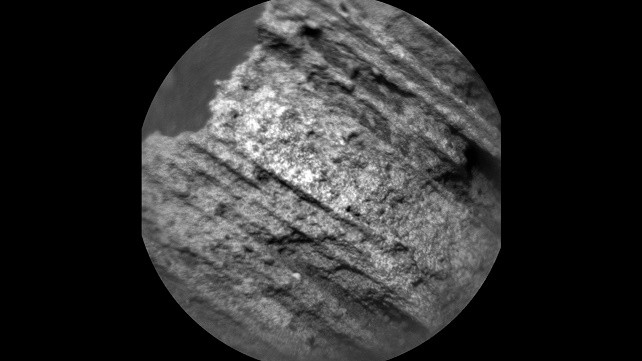NASA announced last Friday that they have successfully repaired the autofocus features of Curiosity rover's Chemistry and Camera (ChemCam) instrument which will now greatly improve the rover's capabilities to gather data about the chemical composition of Martian rocks.
The ChemCam obtains important information by using a tiny yet intense laser that can zap rocks and other geological features found on Mars where it will record spectrometer readings. During the first two years on the Red Planet the ChemCam was able to obtain this data by using this laser method but the laser apparently stopped working some several months ago.
According to Roger Wiens who is the ChemCam principal investigator from the Los Alamos National Laboratory, without this laser rangefinder, the ChemCam is considered as blind. The main laser works by creating pulses or flashes of plasma during its analyses of rocks and soil that can reach up to 25 feet.
This main laser however, is not affected but the analysis only works when the telescope that projects the laser light on the target is in focus.
Ever since the ChemCam autofocus feature became unusable, the Curiosity team sent commands to the rover to capture nine images of an object with the ChemCam, where each were taken at a different focus for the team to decide which one would be considered as useful. The process entails sending the preferred image back to Earth where each analysis would require taking lots of photos and choosing the final one.
This technical laser failure was detected last November where the team immediately worked on a software upgrade in December. The team tested the patch on a ChemCam clone at a laboratory in Los Alamos and after, at a facility located in France and then to a rover testbed at the Jet Propulsion Laboratory where NASA gave the go signal last week.
The technical fix involves a 40 kilobyte software transmission via airwaves to the rover. When the ChemCam continues to capture multiple images, the instrument automatically selects the perfect focus feature for the final images along with the laser analysis data which are sent back to Earth. This specific patch was already applied on Curiosity last week where both the rover and the ChemCam have resumed working.



























